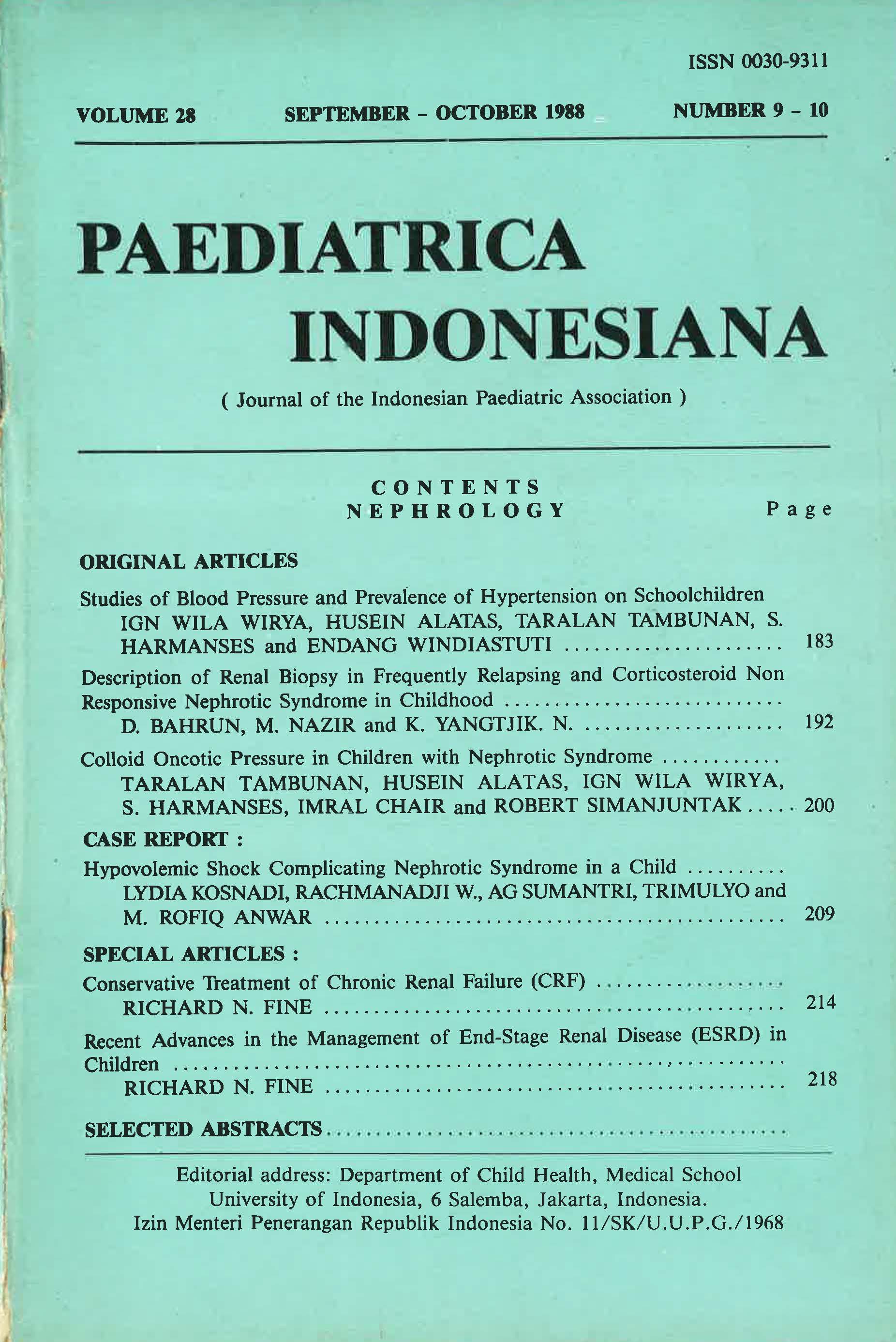Conservative Treatment of Chronic Renal Failure (CRF)
DOI:
https://doi.org/10.14238/pi28.9-10.1988.214-7Keywords:
chronic renal filure; glomerular filtration rate; GFR; nephrectomyAbstract
The infant, child and adolescent who has irreversible impairment of renal function, regardless of the specific etiology, invariably experiences a progressive decline in glomerular filtration rate (GFR) over time. This decline in GFR can be attributed to an unremitting attack on the remaining unaffected nephrons by, the primary disease process such as in a patient with acquired immune complex disease, but the reasons for the progressive decline in GFR in patients with congenital diseases are more difficult to identify.
Currently the hypothesis attributing the decline in GFR to damage to the remaining intact nephrons resulting from hyperperfusion is receiving increasing attention. Creation of CRF in the rat model by 7/8 nephrectomy leads to a rapid decline in GFR and focal glomerulosclerosis (FGS) in the previously normal glomeruli. This lesion of FGS is presumably a result of hyperperfusion of the remaining normal nephrons in order to compensate for the reduction in functioning renal mass.
Downloads
Published
How to Cite
Issue
Section
License
Authors who publish with this journal agree to the following terms:
Authors retain copyright and grant the journal right of first publication with the work simultaneously licensed under a Creative Commons Attribution License that allows others to share the work with an acknowledgement of the work's authorship and initial publication in this journal.
Authors are able to enter into separate, additional contractual arrangements for the non-exclusive distribution of the journal's published version of the work (e.g., post it to an institutional repository or publish it in a book), with an acknowledgement of its initial publication in this journal.


















